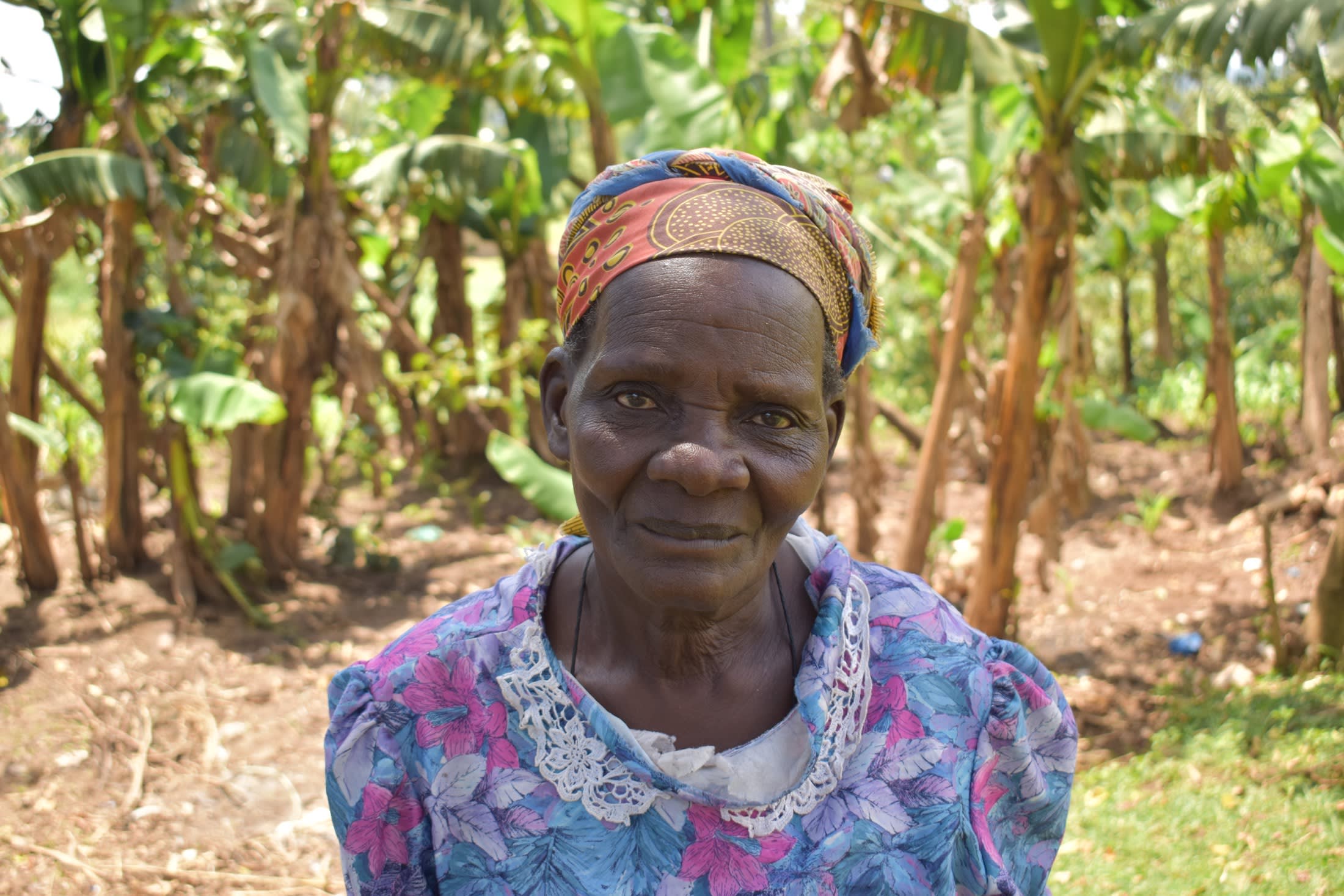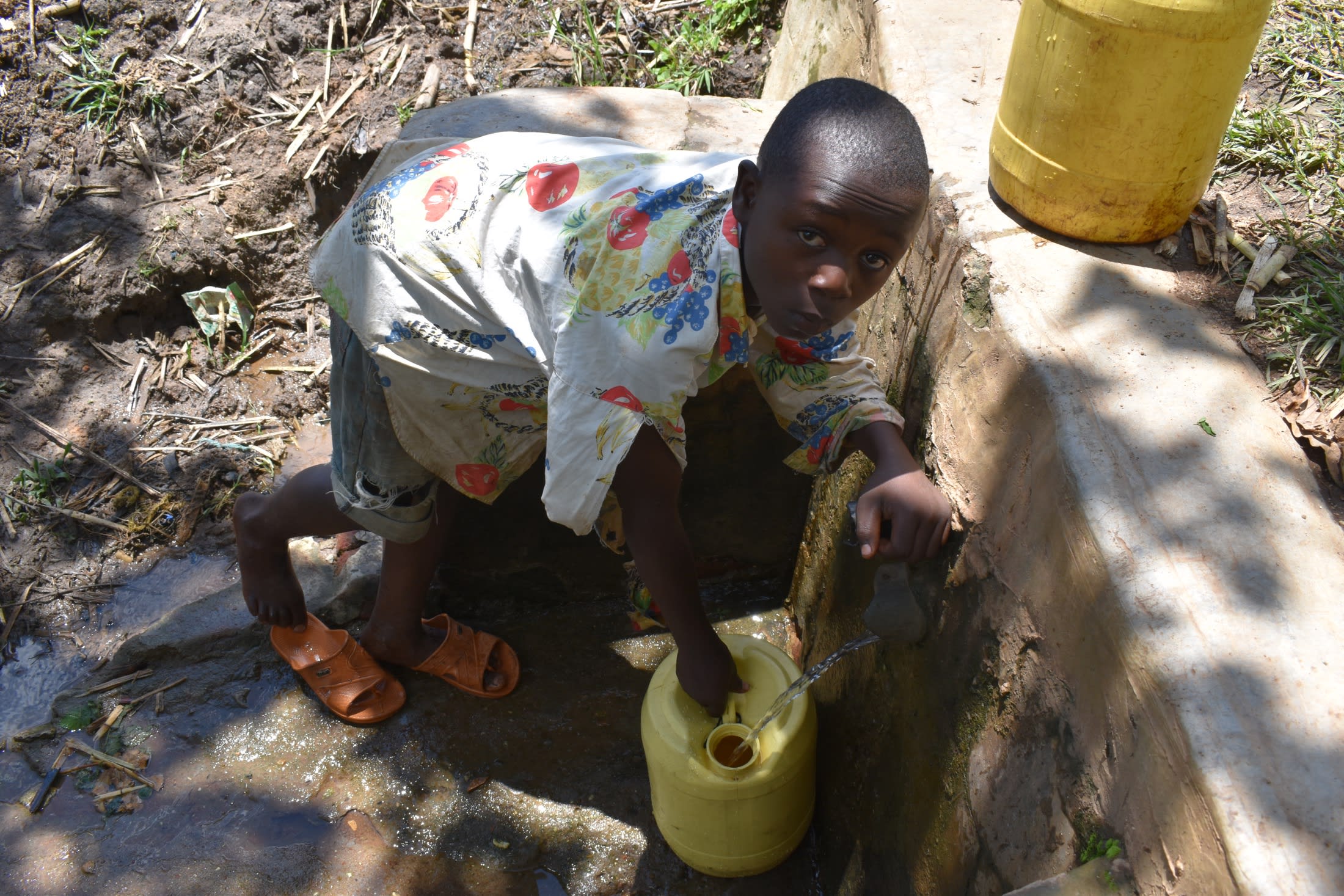The 350 community members of Indulusia are familiar with spring protection, or at least attempted spring protection. Unfortunately, their previous experience was disappointing, with shoddy construction work by another entity that failed to protect Chisaina Spring. Since then, their spring has not functioned as it should, putting everyone's health at risk and community members' patience to the test.
Understandably, at first, they were reluctant to welcome us to protect their spring. They hesitated because they were convinced this could be another waste of materials, time, and resources. But with further clarification and examples of other springs we've protected in the area, we were able to win their trust.
Almost all community members are farmers who grow sugarcane, bananas, maize, beans, and sweet potatoes. Currently, they have to plan their day well to accommodate the hours needed for fetching water from the spring and still be able to farm successfully. Many of them fetch water in the very early hours of the day to avoid long lines, but some prefer the evening hours after they can be sure they've given dedicated time to their farms.

Violet Nasimiyu (in the photo above), 71, said, "With my advanced age, it's not easy to access the spring. The stairs are damaged. When it rains, it becomes slippery. I have to carry a much smaller container so that I don't stumble and fall. This makes me make several trips to the spring. It's tiresome."
The spring looks partially protected but is exposed to contamination. The staircase is crumbling, making it hard for the community members to access the water, and the floor is eroding. The drawing point is dirty and muddy, and the pipes placed for water collection are too small and have already begun to rust.
With the spring damaged from the first protection attempt, water seeps from several areas it shouldn't, not just the small pipe fixed in the wall. This has caused a reduction in the discharge speed, slowing collection times and causing crowding at the spring.

Kelvin J., in the photo above collecting water from the spring, 11, shared, "We sometimes fight at the spring with my fellow children simply because everyone wants to fill their container, yet the water from the pipe is not plenty. A lot of water is wasted oozing from the damaged spring walls."
Thankfully. the community members of Indulusia are willing to trust us to protect their spring. They need the confidence of a safe water source they can rely on for the future, and we are happy to make this possible.
What We Can Do:
Spring Protection
Protecting the spring will help provide access to cleaner and safer water and reduce the time people have to spend to fetch it. Construction will keep surface runoff and other contaminants out of the water. With the community's high involvement in the process, there should be a good sense of responsibility and ownership for the new clean water source.
Fetching water is a task predominantly carried out by women and young girls. Protecting the spring and offering training and support will, therefore, help empower the female members of the community by freeing up more of their time and energy to engage and invest in income-generating activities and their education.
Training on Health, Hygiene, COVID-19, and More
To hold trainings during the pandemic, we work closely with both community leaders and the local government to approve small groups to attend training. We ask community leaders to invite a select yet representative group of people to attend training who will then act as ambassadors to the rest of the community to share what they learn. We also communicate our expectations of physical distancing and wearing masks for all who choose to attend.
The training will focus on improved hygiene, health, and sanitation habits in this community. We will also have a dedicated session on COVID-19 symptoms, transmission routes, and prevention best practices.
With the community's input, we will identify key leverage points where they can alter their practices at the personal, household, and community levels to affect change. This training will help to ensure participants have the knowledge they need about healthy practices and their importance to make the most of their water point as soon as water is flowing.
Our team of facilitators will use a variety of methods to train community members. Some of these methods include participatory hygiene and sanitation transformation, asset-based community development, group discussions, handouts, and demonstrations at the spring.
One of the most important issues we plan to cover is the handling, storage, and treatment of water. Having a clean water source will be extremely helpful, but it is useless if water gets contaminated by the time it is consumed. We and the community strongly believe that all of these components will work together to improve living standards here, which will help to unlock the potential for these community members to live better, healthier lives.
We will then conduct a small series of follow-up trainings before transitioning to our regularly scheduled support visits throughout the year.
Training will result in the formation of a water user committee, elected by their peers, that will oversee the operations and maintenance of the spring. The committee will enforce proper behavior around the spring and delegate tasks that will help preserve the site, such as building a fence and digging proper drainage channels. The fence will keep out destructive animals and unwanted waste, and the drainage will keep the area's mosquito population at a minimum.

 Protected Spring
Protected Spring
 Rehabilitation Project
Rehabilitation Project








































